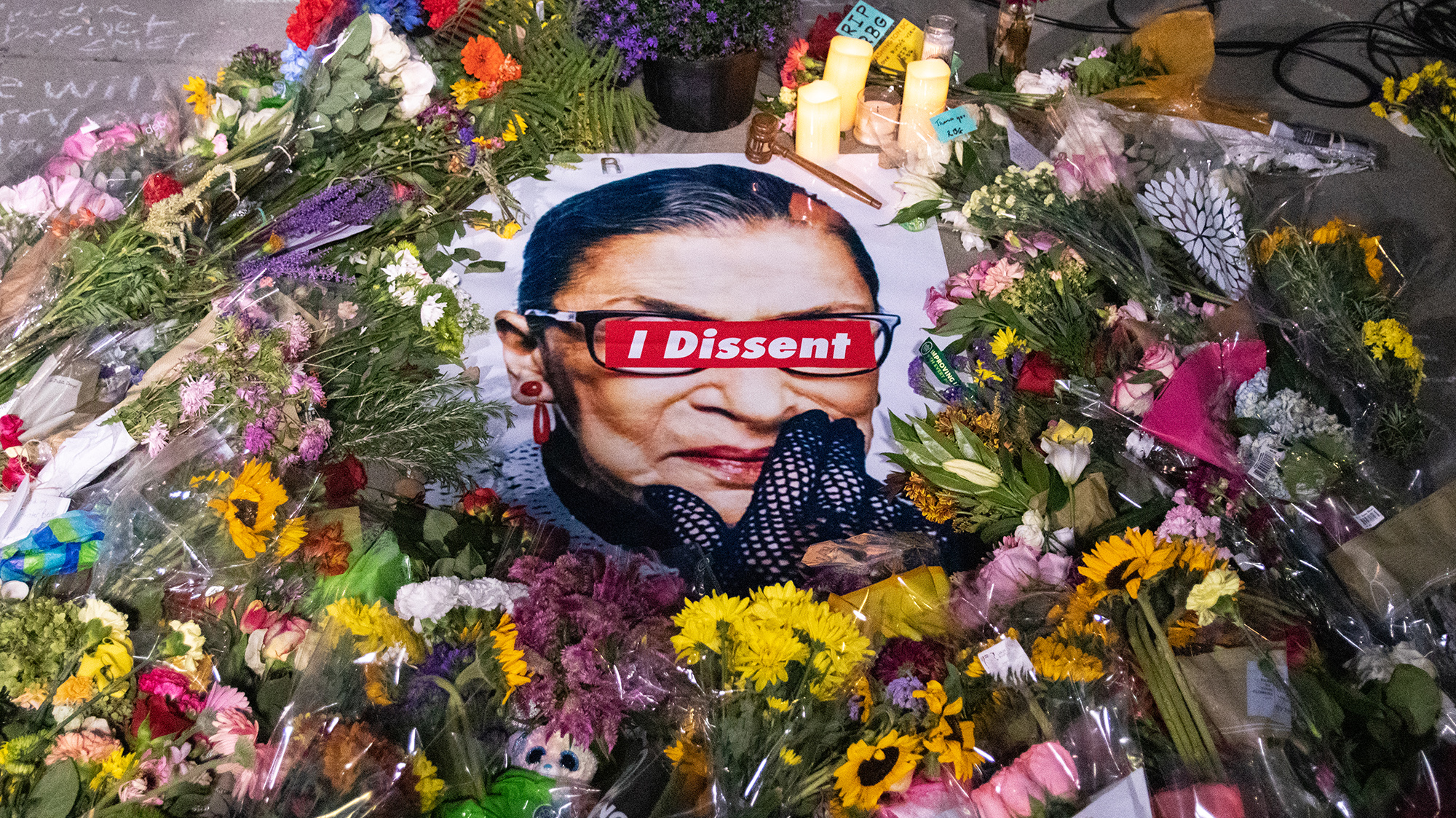Views expressed in opinion columns are the author’s own.
Supreme Court Justice Ruth Bader Ginsburg has been called a lot of things: a trailblazer, a role model, the “Notorious RBG.” But I believe her most fitting description was “feminist icon.” And perhaps that’s why the news about her death last week elicited such a strong waterfall of tears from me.
Ginsburg’s feminist vision was derived from more than just her own identity as a Jewish woman or working mother. She excelled in the face of gender discrimination throughout her career and fought tirelessly for the rights of anyone experiencing the same thing. She embodied true feminism.
In order to understand how she came to be such an icon, we must first establish what feminism really means. In its most basic definition, feminism is an intersectional movement for equality among all genders. It is not a desire to raise women above men, but rather a mission to end the sexism and oppression that result from patriarchy.
Ginsburg persevered in the face of gender discrimination before she ever sat on this country’s highest court. She was one of nine women in her class at Harvard Law School. She later transferred to Columbia Law School to finish her legal education, where she graduated first in her class in 1959. However, her difficulties in finding a job after law school — despite her strong record — made it clear women were still not welcome in male-dominated workplaces at the time.
Beyond fighting the discrimination present in her own life, she was an advocate for the ordinary people who experienced inequality in their lives as well. As a litigator with the American Civil Liberties Union, she argued six landmark cases before the Supreme Court prior to being appointed as a justice of the court herself in 1993.
There, she continued to fight for equality in cases such as United States v. Virginia in 1996, for which she wrote the majority opinion. This case established that qualified women could not be denied admission to Virginia Military Institute, a historically male-only public college, thus establishing the gender-biased admission policy as unconstitutional.
One of the most notable aspects of Ginsburg’s career was her strategy of using male plaintiffs to show how gender biases can harm anyone. She articulated this point in cases such as Weinberger v. Weisenfeld in 1975, which affirmed a man’s right to collect the same Social Security benefits a woman would in order to take care of a child after a spouse’s death.
Like a true feminist, she worked to break down the stereotypical gender norms which, in this case, would prevent a man from taking on the role of the caretaker. She fought against patriarchy as a whole, recognizing how it oppresses men and women alike. Her time on the court reasserted that sexism is the real villain, not men in general.
Ginsburg has destroyed misconceptions about feminism in order to uplift anyone who felt marginalized, who felt their voice had been silenced. In the tumultuous days after her death, her legacy serves to remind us what we’re fighting for. In the eyes of young girls, women and feminists, she was a symbol of courage and hope — a monumental figure who never stopped advocating for the feminist vision of true equality. And she did it all with the utmost dignity, civility and kindness.
Allison Cochrane is a senior biology major. She can be reached at allisonc@umd.edu.



